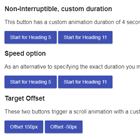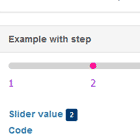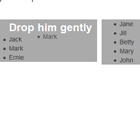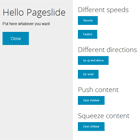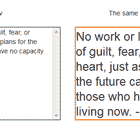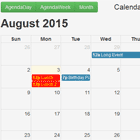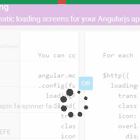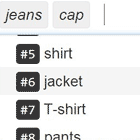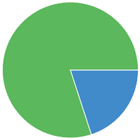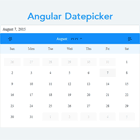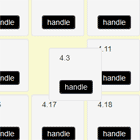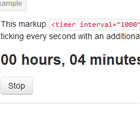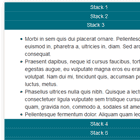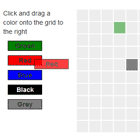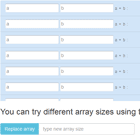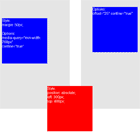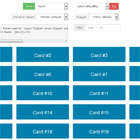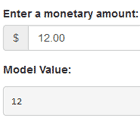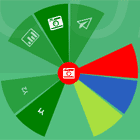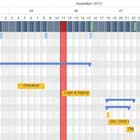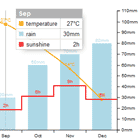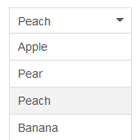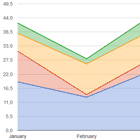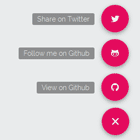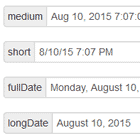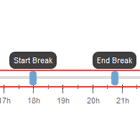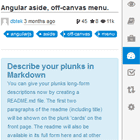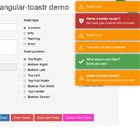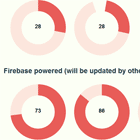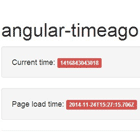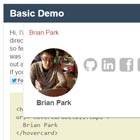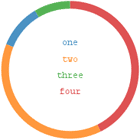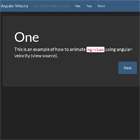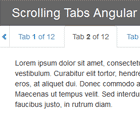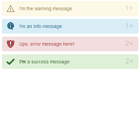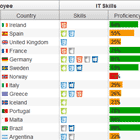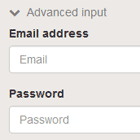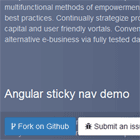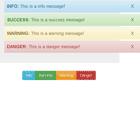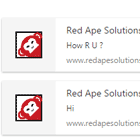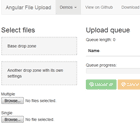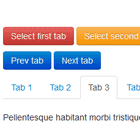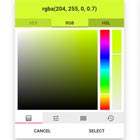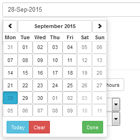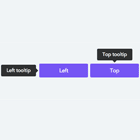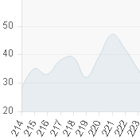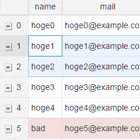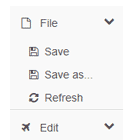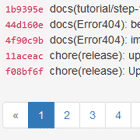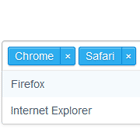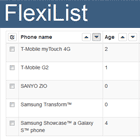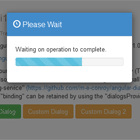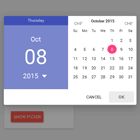ngx-page-scroll 

Animated scrolling functionality for angular written in pure typescript with no additional dependencies
Breaking Change: Starting with v6 this library consists of two modules: ngx-page-scroll-core (the service) and ngx-page-scroll (the directive). ➡ How to upgrade
Features
- flexible: trigger scroll animations after component load, server response, etc.
- easy-to-use directive: scroll to an element referenced in the href-attribute (
href="#mytarget) just by addingpageScrolldirective - customizable: adjust duration, offset or whether scrolling stops if the user interrupts (read more)
- use custom easing functions to calculate the scroll position over time
- works across routes (scrolls to target element as soon as the routing has finished) and in both directions (horizontal/vertical)
Table of contents
Version compatibility
| ngx-page-scroll/ngx-page-scroll-core version | compatible angular version | Documentation |
|---|---|---|
| v7.x (to be released) | v8 | README |
| v6.x | v7, v8 | README |
| v5.x | v6 | README |
| v4.x | v4, v5 | README |
Service
Setup
First you need to install the core npm module:
npm install ngx-page-scroll-core --saveThen add the NgxPageScrollModule to the imports array of your application module:
import { NgxPageScrollCoreModule } from 'ngx-page-scroll-core'; @NgModule({ imports: [ /* Other imports here */ NgxPageScrollCoreModule ] }) export class AppModule { }Usage
Using the PageScrollService#scroll method you may trigger scroll animations. Provide an options object that provides a reference to the document and the scroll target. Additional properties are optional.
import { DOCUMENT, Inject } from '@angular/common'; import { PageScrollService } from 'ngx-page-scroll-core'; export class MyComponent { constructor(private pageScrollService: PageScrollService, @Inject(DOCUMENT) private document: any) { } ngOnInit(): void { this.pageScrollService.scroll({ document: this.document, scrollTarget: '.theEnd', }); } }Note: The scroll() method is a shorthand from creating a PageScrollInstance (an object encapsulating all information relevant for performing a scroll animation) using PageScrollService#create and starting it using the PageScrollService#start method.
Configuration
When importing the PageScrollCoreModule one can provide option overrides:
imports: [ ... NgxPageScrollCoreModule.forRoot({duration: 2500, easingLogic: ...}), ]Check the PageScrollConfig interface for possible options and their impact. The default values may be found in the defaultPageScrollConfig object.
Directive
For ease of use a directive pageScroll exists, which allows you to quickly add scroll animations to your angular app by adding a property to your existing HTML a-tags. It can also work cross-routes, meaning it will start the scroll animation after the target route has been loaded. It utilizes the ngx-page-scroll-core module for that, thus requires it as a peer dependency.
Setup
First you need to install the directive npm module:
npm install ngx-page-scroll --saveThen add the NgxPageScrollModule to the imports array of your application module:
import { NgxPageScrollModule } from 'ngx-page-scroll'; @NgModule({ imports: [ /* Other imports here */ NgxPageScrollModule ] }) export class AppModule { }Usage
In your template you may add the pageScroll attribute to elements with an href attribute pointing towards an id on the same page (e.g. #theId). The onClick event will be interrupted and the scroll animation starts. Alternatively you may set the optional pageScrollTarget property to a valid css selector to specify the target element to scroll to.
@Component({ ... template: `... <a pageScroll href="#awesomePart">Take me to the awesomeness</a> <!-- Further content here --> <h2 id="awesomePart">This is where the awesome happens</h2> ...`, }) export class MyComponent { }Directive API
Additional attributes may be set on an DOM element using the pageScroll directive for customization. They take precedence over the default settings specified in PageScrollConfig class. Thereby it is possible to have all page scroll-animations last e.g. 2 seconds, but a specific one should be performed with a custom easing function and a duration of only 1 second.
PageScroll properties
| Attribute | Type | Default | Description |
|---|---|---|---|
pageScroll | Attribute adding scroll-animation behavior when the click-event happens on the element. | ||
pageScrollTarget | string | Optional attribute to set the element that should be scrolled to. Takes precedence over the ´href´-value | |
pageScrollHorizontal | boolean | false | Whether the scroll should happen in vertical direction (false, default) or horizontal (true). |
pageScrollOffset | number | 0 | Pixels to offset from the top of the element when scrolling to (positive value = scrolling will stop given pixels atop the target element). |
pageScrollDuration | number | 1250 | Duration in milliseconds the whole scroll-animation should last. |
pageScrollSpeed | number | - | Speed in Pixel/Second the animation should take. Only applied if no duration is set. |
pageScrollInterruptible | boolean | true | Whether the scroll animation should stop if the user interferes with it (true) or not (false). |
pageScrollAdjustHash | boolean | false | Whether the routes hash/fragment should be updated to reflect to section that has been scrolled to |
pageScrollEasing | EasingLogic | linearEasing | Easing method to be used while calculating the scroll position over time (default is linear easing). |
PageScroll events
| Event | Type | Description |
|---|---|---|
pageScrollFinish | boolean | Fired when the scroll-animation stops. Emits a boolean value which indicates whether the scroll animation finished successfully and reached its target (true) or not (false). Possible reasons for false: target not found or interrupted due to another scroll animation starting or user interaction. |
Example
The following example will check whether the route Home is currently loaded. If this is true, the scroll-animation will be performed with the default properties. If a different route is loaded, a subscription for route changes will be made and the scroll-animation will be performed as soon as the new route is loaded.
<a pageScroll [routerLink]="['Home']" href="#myanchor">Go there</a>Overriding all possible properties. doSmth() and myEasing are defined in the component
<a pageScroll [pageScrollOffset]="0" [pageScrollDuration]="2000" [pageScrollEasing]="myEasing" [pageScrollInterruptible]="false" (pageScrollFinish)="doSmth($event)" href="#theanchor">Visit</a> public myEasing: EasingLogic = (t: number, b: number, c: number, d: number): number => { // easeInOutExpo easing if (t === 0) { return b; } if (t === d) { return b + c; } if ((t /= d / 2) < 1) { return c / 2 * Math.pow(2, 10 * (t - 1)) + b; } return c / 2 * (-Math.pow(2, -10 * --t) + 2) + b; } doSmth(reachedTarget: boolean): void { if (reachedTarget) { console.log('Yeah, we reached our destination'); } else { console.log('Ohoh, something interrupted us'); } }